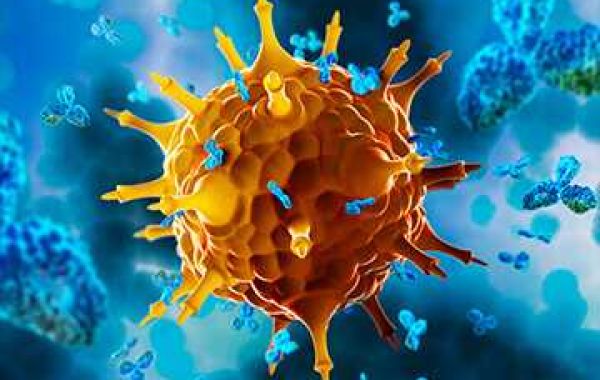As an expert in providing solutions to assist virology and microbiology research, Creative Diagnostics is proud to announce the launch of its comprehensive suite of Plaque Reduction Assay services to support antiviral research. These new solutions offer researchers a powerful and well-established method for evaluating the efficacy of antiviral compounds.
Normal cells can absorb reactive dyes during metabolism, but when the cells are infected with a virus, they lose their ability to absorb the dye, resulting in the formation of colorless plaques. When a virus is neutralized by a specific antibody and then infects a cell, the number of cellular plaques formed decreases accordingly. Therefore, the titer of the antibody that neutralizes the virus can be calculated from the number of cellular plaques.
The Plaque Reduction Assay measures the efficiency with which the virus forms plaques in the presence of different concentrations of the assay. The time required for plaque visualization depends on the kinetics of viral replication and ranges from 24 hours to several weeks. Because plaques must be at least 1 mm wide to be accurately scored (especially by the naked eye), this analysis is typically performed on 24-well or 6-well plates, as any smaller wells may compromise readability and resolution.
The plaque reduction neutralization test (PRNT) is a variant of the plaque reduction assay and is considered the gold standard for detecting neutralizing antibodies to certain viruses, such as dengue virus. The basic design of the PRNT is to generate virus-antibody interactions in test tubes or microtiter plates and then apply the mixture to virus-sensitive cells to measure the effect of the antibody on virus infectivity.
PRNT is a versatile tool in virology with applications in diagnosing viral infections, characterizing toxins, and vaccine development. It can be used to detect antibodies in a patient’s serum or identify viruses in diseased tissue, aiding in diagnosis. PRNT can also be utilized with antitoxin serum to identify and quantify bacterial toxins in pathological material. Furthermore, it is a valuable technique for determining the potency of antiviral serums and antitoxins, as well as identifying and classifying newly isolated viruses.
As a solution provider for virology and microbiology research, Creative Diagnostics offers comprehensive Plaque Reduction Assay services (e.g., PRNT) to empower researchers to accelerate breakthroughs in the field of virology. The company is dedicated to providing antiviral testing and customized early detection solutions to life science companies working in the field of antiviral and infectious disease diagnosis.
For viruses with only minor cellular lesions or viruses that take a long time to develop phagocytosis, Creative Diagnostics uses immunostaining of infected foci to provide faster results in a smaller format without sacrificing accuracy. The company also utilizes standard sera as a baseline for each result, allowing comparisons between laboratories and over time.
For more information about the Plaque Reduction Assay services, please visit https://antiviral.creative-diagnostics.com/plaque-reduction-assays.html.
About Creative Diagnostics
Headquartered in New York, Creative Diagnostics is a consulting and experimental service provider specializing in virology and microbiology. The company provides comprehensive solutions to conquer obstacles in virology and microbiology research, from high-security infrastructure provision, biosafety regulation elucidation, to expert viral system assistance.







